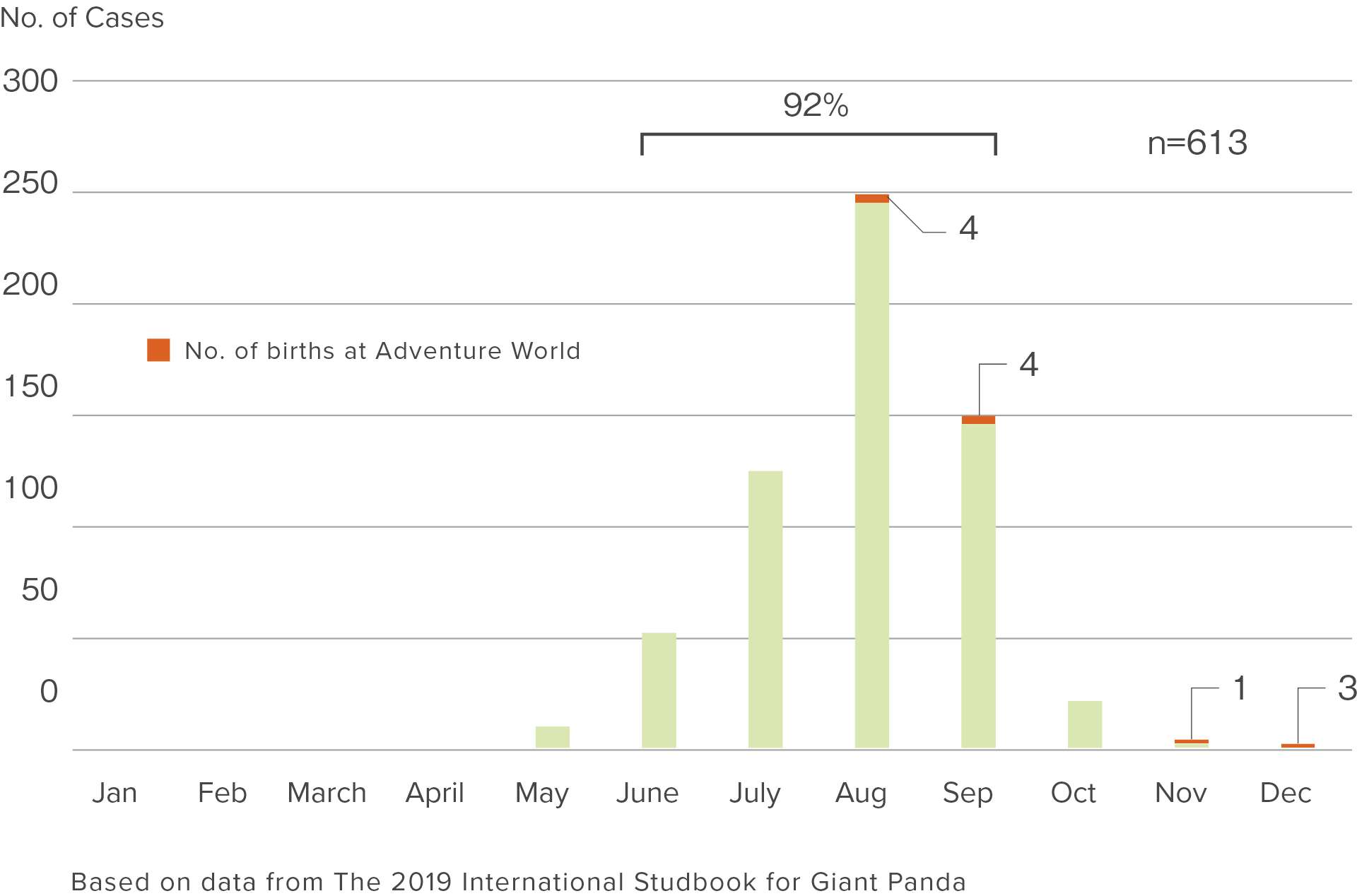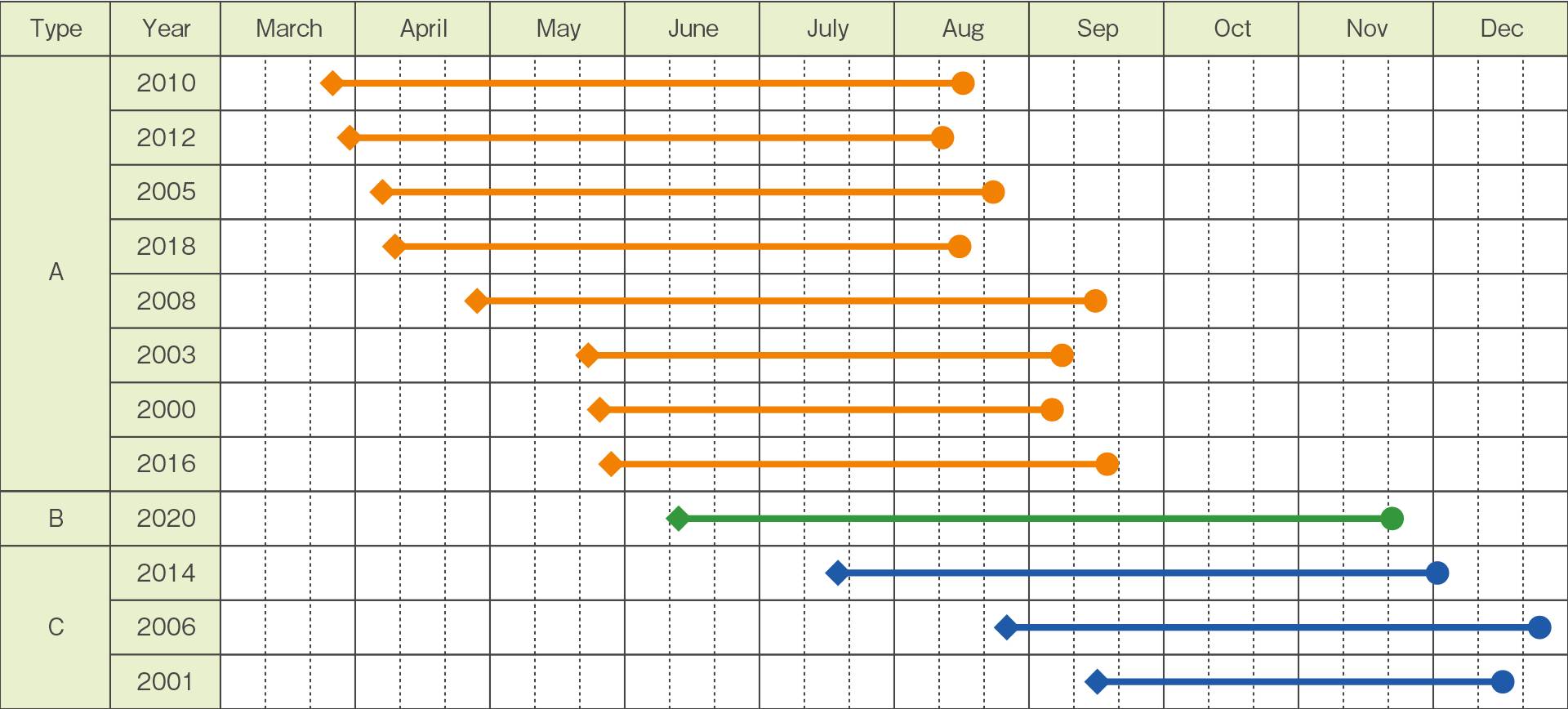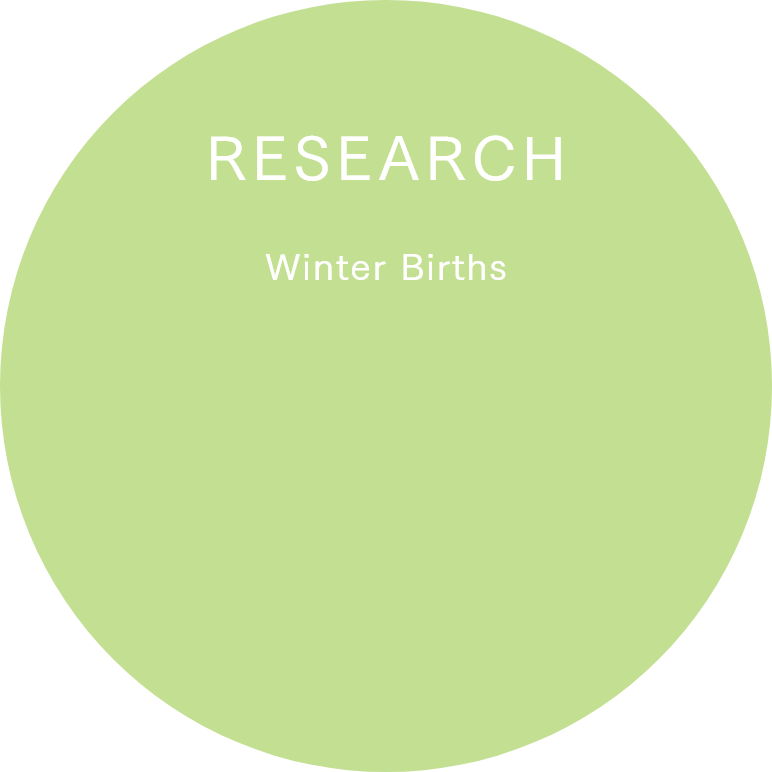

Giant pandas typically enter estrus in spring and give birth between summer and early fall. In captivity, 92% of births fall between June and September, and winter births are exceedingly rare. There are only seven reported cases of winter births (between November and December) in captivity, four of which occurred at our park (one in November and three in December). (Figure 1)
Figure 1. Number of Births by Month

1. Off-Season Estrus
Table 1 shows the patterns of mating at the park. The winter births observed here are as follows: cases in which the gestation period was longer than usual due to mating occurring slightly later than normal, resulting in a winter birth (2020); and cases in which estrus and mating occurred between summer to early autumn, outside the normal season, and resulted in winter births (2001, 2006, 2014).
Table 1. Breeding Patterns

◆: Mating ●: Birth
A: Seasonal (spring) estrus and mating, followed by birth in August through September
B: Slightly delayed mating, with gestation period carrying into winter
C: Off-season (summer to early fall) estrus and mating, resulting in winter birth
Stage comparison for seasonal (seven cases) and off-season (three cases) estrus (Table 2). Early estrus signs for males occur two to three months earlier than females in seasonal estrus, but off-season signs in males are observed several days after females. We can speculate that male behavior in these cases was induced by the signs of estrus in the females.(See the following for classification of estrus stages)
Table 2: Stage Comparison of Seasonal and Off-season Estrus
| No. of Cases | Estrus Stage | ||||
|---|---|---|---|---|---|
| Early Estrus | Mid Estrus | Peak Estrus | |||
| Female | Seasonal Estrus | 7 | Day ー20.0±12.2 | Day ー7.6±1.4 | Day 0.6±0.8 |
| Off-Season Estrus | 3 | Day ー19.3±9.3 | Day -6.3±1.2 | Day ー0.3±0.6 | |
| Male | Seasonal Estrus | 7 | ー2~3 months | Day ー6.3±2.0 | Day ー2.4±1.9 |
| Off-Season Estrus | 3 | Day ー14.7±4.2 | Day ー7.0±4.0 | Day ー2.0±2.6 | |
2. Winter Birth Precautions
Heated rooms and humidity control are crucial for winter births. The newborns require heated rooms to maintain their normal body temperature, while the mothers require appropriate levels of humidity in order to focus on rearing the baby. When humidity fell to 50% or lower, we saw mothers frequently scratch their dry, itchy skin on the cage, taking focus away from raising their newborn. We believe the ideal conditions for winter delivery rooms are a temperature of approximately 20°C and a humidity level of around 60%. (Table 3)
Table 3. Delivery Room Temperature and Humidity Level
| No. of Cases | Ambient Temperature (°C) | Humidity (%) | |
|---|---|---|---|
| Summer Births | 6 | 24.0±1.1 | 69.9±16.3 |
| Winter Births | 3 | 19.3±1.0 | 56.0±11.7 |
